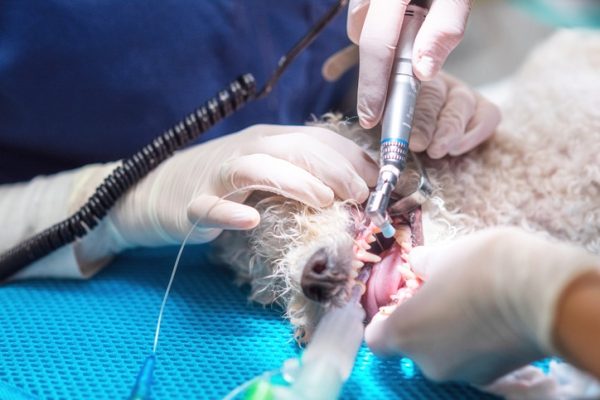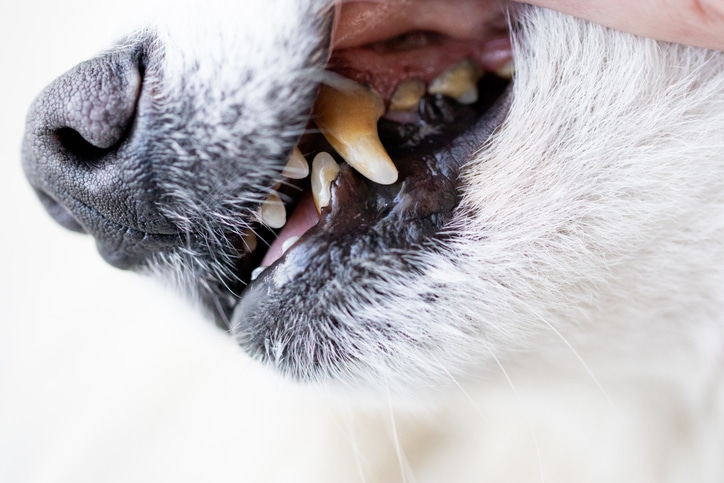Pet parents often hear about the importance of proper dental care to keep their dogs’ teeth healthy. But sometimes dog dental problems happen.
Rachel Hinder, claims manager at Embrace Pet Insurance, says the top dog dental problems among its insured clients are dog dental disease (which can cost $750 on average to treat), tartar ($500 on average) and fractured tooth ($625 on average). Other related dental expenses can include dog dental cleaning cost (average of $246) and cost of dog dental extraction (average of $187).

Top dog dental problems
Dr. Briana Mirchel, American Veterinary Dental College resident at Animal Dental Services in California, says that far and away, the most common problem is periodontal dental disease in dogs. She says it’s from buildup of bacteria, waste products, debris and inflammation affecting the supporting structure of the tooth that when left untreated causes the tooth to become loose. Once the tooth becomes loose, extraction is often the recommended treatment.
“The best course of action is early intervention,” she says. “Start dental care early. Brushing daily has repeatedly been shown in studies to be the best at-home dental care in addition to yearly anesthetic cleanings.”
Dr. Mirchel says the second most common dental issue they see is fractured teeth. She says that unlike humans, who have grinding and chewing teeth in the back, dogs have a scissor-like action where their upper teeth slide past the lower teeth with their largest teeth being called the “carnassials” (meaning meat-shearing teeth).
“When dogs try to chew on hard, especially cylindrical objects, such as nylon bones, animal bones and bully sticks, and try to crush these objects, their teeth will often fracture,” she says. “Some dogs will stop at that point while others will then transition to the other side and fracture that tooth as well.”
She says that depending on the severity of the fracture and health of the tooth, treatment can include either trying to preserve the tooth with a root canal or performing an extraction.
“When we do a root canal, we clean out the diseased pulp, leaving the tooth in place, then disinfect the cavity, place inert rubber and seal the tooth,” she says. “We may then prep the surface of the tooth and take an impression for a mixed metal alloy crown.”
Signs of dog dental problems
Dr. Mirchel says that dogs don’t always signal when they have pain in the mouth because they can be very food driven and also since some pain is worse with hot/cold sensation, which is hard to see in canine patients, there are some things to look out for:
- Your dog avoids a side of his mouth when chewing
- Your dog avoids certain toys or harder treats
- There’s a significant odor from his mouth
- There’s pus at the gum line
- His gums bleed easily
- There’s swelling, such as under the eye — which is often the site of a draining tooth root abscess.
Dog dental problems can be painful and costly. Prevention is key. Regular dental care, including brushing and/or using other dental products, such as dental wipes, tooth gels and water additives, as well as being careful with chews that may be too hard for your dog can go a long way. But it’s also important to monitor your dog for signs of discomfort like avoiding chewing on one side of the mouth or for symptoms like bleeding gums. If you’re concerned about your dog’s teeth, pay a visit to your vet for an oral check-up.






